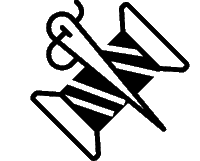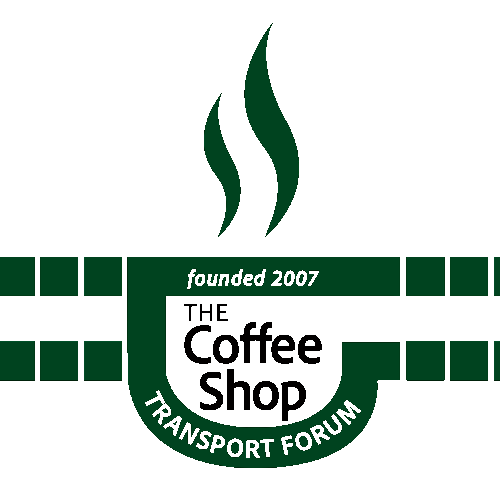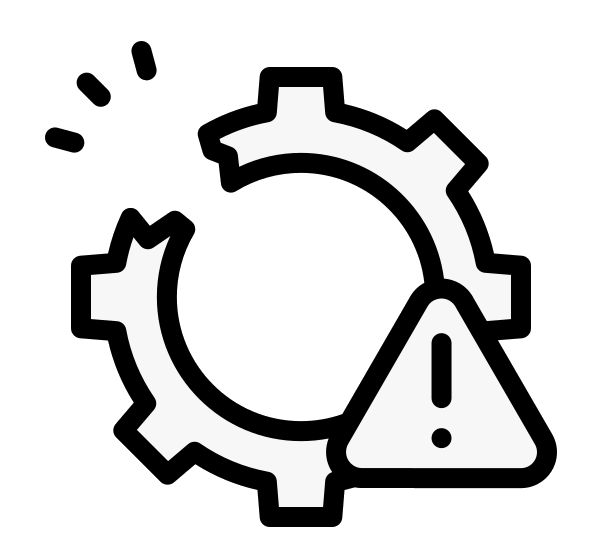| Re: Harrow & Wealdstone 8th October 1952 & Nursing Lieutenant Abbie Sweetwine. Posted by grahame at 10:58, 8th October 2022 |     |
A memorial service held yesterday - see Harrow Online
Members of the public and esteemed personnel gathered at Harrow and Wealdstone Station today in a special remembrance service on the eve of the 70th anniversary of the Harrow and Wealdstone Train Crash.
On 8th October 1952, the worst peacetime rail crash in British history happened at the station when a three-train collision killed 112 people and injured 340 more.
The remembrance service was opened by Nick Dent, Director of Customer Operation at TfL, who said: “It’s lovely to see so many of you here today, and I know that includes many families that were so badly affected by the rail tragedy.”
“It’s 70 years ago tomorrow that the most unimaginable tragedy happened, many of you will know that there was a local commuter train, just as there would have been this morning, a very busy station then as it is now, taking people to work to London and down from Tring and Watford and many other local stations. And then an overnight express train from Perth travelling at high speed in very thick, foggy conditions that morning, collided with the back of the local commuter train. Moments later – a third train, an express train making its way out of London to Manchester and Liverpool collided with the wreckage. It would have been the most unimaginable scene,” he said.
[snip]
The Mayor of Harrow then reflected on the impact the rail crash had, paying tribute to the heroic efforts of medics and personnel at the scene of the accident.
“Of the 340 injured, 183 were treated on-site, and 157 were taken to hospital. The heroes of the hour – a 14-year-old scout, Gilbert Powell, thought to have been the youngest person to help at the Harrow and Wealdstone crash. He attended the 60th anniversary but died the following year aged 75. The reason why Gilbert managed to get in and out of the wreckage was because he was small, and could identify to the rescuers, who needed to be rescued.”
On 8th October 1952, the worst peacetime rail crash in British history happened at the station when a three-train collision killed 112 people and injured 340 more.
The remembrance service was opened by Nick Dent, Director of Customer Operation at TfL, who said: “It’s lovely to see so many of you here today, and I know that includes many families that were so badly affected by the rail tragedy.”
“It’s 70 years ago tomorrow that the most unimaginable tragedy happened, many of you will know that there was a local commuter train, just as there would have been this morning, a very busy station then as it is now, taking people to work to London and down from Tring and Watford and many other local stations. And then an overnight express train from Perth travelling at high speed in very thick, foggy conditions that morning, collided with the back of the local commuter train. Moments later – a third train, an express train making its way out of London to Manchester and Liverpool collided with the wreckage. It would have been the most unimaginable scene,” he said.
[snip]
The Mayor of Harrow then reflected on the impact the rail crash had, paying tribute to the heroic efforts of medics and personnel at the scene of the accident.
“Of the 340 injured, 183 were treated on-site, and 157 were taken to hospital. The heroes of the hour – a 14-year-old scout, Gilbert Powell, thought to have been the youngest person to help at the Harrow and Wealdstone crash. He attended the 60th anniversary but died the following year aged 75. The reason why Gilbert managed to get in and out of the wreckage was because he was small, and could identify to the rescuers, who needed to be rescued.”
| Re: Harrow & Wealdstone 8th October 1952 & Nursing Lieutenant Abbie Sweetwine. Posted by grahame at 08:16, 8th October 2022 |     |
Coming back to this thread on this sombre anniversary day.
SPADs have happened since the very early days of their being signals on the railways and so many steps have rightly been taken to get reduce and indeed eliminate them, with extra steps (such as catch points and keeping signals back from conflict points) to mitigate the effects. However, so much of what happens when a signal is passed at danger is down to luck - what else is around where at the time - and in the dreadful case of Harrow and Wealdstone circumstances conspired to produce the worst possible outcome.
| Re: Harrow & Wealdstone 8th October 1952 & Nursing Lieutenant Abbie Sweetwine. Posted by JayMac at 16:19, 8th October 2021 |     |
What a wonderful human being. And a delightful name too.
| Harrow & Wealdstone 8th October 1952 & Nursing Lieutenant Abbie Sweetwine. Posted by ellendune at 15:04, 8th October 2021 |     |
From Twitter
https://twitter.com/garius/status/1446447850326564868?s=20
On 8th Oct 1952 the worst civilian rail disaster in UK history happened in London. 112 dead. 340 injured.
That accident, and the actions of one woman from Florida have saved THOUSANDS of lives.
Because the disaster helped invent the paramedic
https://www.youtube.com/watch?v=YU60PgAjh0E&t=7s&ab_channel=Spongebag44
Not going to go into the mechanics of the crash. For that, my #longread's below.
At 8am an express running south slammed full steam into the back of a packed commuter train at Harrow & Wealdstone.
The wreckage was then hit by ANOTHER express flying north
You can see from the picture just how awful it was. Made worse by old wooden carriages splintering on impact, and carriages crushing up under the bridge at H&W, which still bears scars today.

But after the disaster two pieces of luck: Who was on the train, and where it happened
The commuter service was popular with railway workers. Many died. A survivor described the Euston drafting office afterwards as "akin to the Somme".
The uninjured railway workers kicked into gear. They checked other lines were secure and began rescue efforts.
By pure chance outside, the ONLY police motorbike equipped with an experimental radio set had just pulled up.
The officer witnessed the accident, called it in. Officers and ambulances were soon inbound.
(The latter would prove an unexpected issue. More in a bit)
MOST critically, on one train were some @usairforce officers. Realising the unfolding scale of the disaster, they asked the police if they would let them request official support from the USAF hospital at Ruislip.
The police agreed. Their superiors instantly accepted the request
The 494th Medical Group was forged in the fires of WW2. The USAF military hospital at Ruislip was brand new, and built to deal with wartime experience.
They prepared for casualties, BUT ALSO scrambled 7 doctors and 1 nurse in an ambulance to the scene as as quick response force.
That team was under the command of Lieutenant Colonel Weiderman. Weiderman was a WW2 veteran medic. His doctors and nurse were trained in combat medicine.
And the MOMENT they got to Harrow, they realised they needed to treat it like combat, not an accident.
Because about now it became clear that the early call for ambulances had a hidden cost: the ambulances had arrived TOO QUICKLY.
They naturally grabbed wounded as they arrived and left for hospitals
But now serious cases were being pulled out. And the ambulances weren't back yet
So Weiderman's team instantly slipped into combat mode. They did something that had been honed, tried and tested by all the combatant armies in WW2. But was then mostly unheard of in civilian healthcare.
They triaged casualties. And they stablised and treated at the scene.
Weiderman and his combat docs could treat because they'd had the presence of mind to grab a lot of modern portable kit and supplies when they'd left Ruislip.
But their ability to do so also depended on them being able to trust one person:
Nursing Lieutenant Abbie Sweetwine.
Weiderman established a triage station on the platforms. That station was largely run by his single nurse: The Floridian Lieutenant Abbie Sweetwine.
She triaged cases for the USAF medical team and, alongside them, helped put in place a system for prioritising ambulance pick-ups.
It was while doing this that she realised another issue developing: The lack of information hospitals would be getting about these patients.
She created a letter system for priority and prior treatment that was communicated to hospitals. Then she marked it on patients heads.
This meant that hospitals knew, from the lipstick scrawled on patient's heads, whether they'd been stabilised already in some way ('X'), been given morphine ('M') or more. All info the hospitals needed to treat the incoming patients properly.
The actions of the USAF team, and Sweetwine in particular that day, visibly and demonstrably (in the accident reports) saved lives.
They proved that in a lot of circumstances, "scoop and run" killed people. You needed ambulances, and people on them, who could "stay and play."
Voices in UK healthcare immediately pushed for change. They'd seen how ambulances SHOULD be: Triage. Treat.
And when more people died after the Lewisham disaster, those voices became an unsilenceable roar:
"Look at HARROW. Copy this. NOW."
It happened. The paramedic was born.
If you've ever been saved by the prompt actions of the UK ambulance service. If you know anyone who has. Then the path of that life saved traces directly back to the Harrow disaster.
To Weiderman and his doctors. To Sweetwine.
And on that note: we're not done here. Not yet.
Go back and watch the video of the aftermath I posted at the beginning of this thread. It's cool i know you skipped it. Smiling face with open mouth and tightly-closed eyesWinking face with tongue
At about 1min11sec you'll see Weiderman's team. And you'll see Abbie Sweetwine.
Sweetwine wasn't just a Floridian.
She was African-American.
Sweetwine was one of the vanishingly small percentage of black nurses then serving in the USAF.
By chance that day, the person who VERY VISIBLY saved the lives of a lot of Londoners. The person they, and the papers, came to refer to as the "Angel of Platform Six" was black.
That made a difference. By carrying out her duty, and through saving lives at Harrow & Wealdstone, Lieutenant Sweetwine put another visible (at the time) crack in the ridiculous notion that somehow her ethnicity made her less capable at her job than others.
Sweetwine is mostly forgotten today. She shouldn't be.
She was a pioneer and a hero. One who would eventually rise to be a USAF Mayor and see service in Korea and Vietnam, before leaving in frustration at the discrimination that prevented her climbing higher.
Abbie Sweetwine died at 87. She is buried in Arlington National Cemetery. It is my hope to visit her there on 8/10/22. The 70th anniversary of Harrow.
I want to lay a wreath, and tell her about everything she helped change.
She's one of my heroes.
https://findagrave.com/memorial/49488965/abbie-l-sweetwine#source

POSTSCRIPT: There are a lot more railway impacts from Harrow too, but they're not really explainable in thread.
But if you have an interest in how Automatic Warning Systems (AWS) became mandatory, something that's also saved lives dig into my long read.
https://www.londonreconnections.com/2012/angels-and-errors-how-the-harrow-wealdstone-disaster-helped-shape-modern-britain/
That accident, and the actions of one woman from Florida have saved THOUSANDS of lives.
Because the disaster helped invent the paramedic
https://www.youtube.com/watch?v=YU60PgAjh0E&t=7s&ab_channel=Spongebag44
Not going to go into the mechanics of the crash. For that, my #longread's below.
At 8am an express running south slammed full steam into the back of a packed commuter train at Harrow & Wealdstone.
The wreckage was then hit by ANOTHER express flying north
You can see from the picture just how awful it was. Made worse by old wooden carriages splintering on impact, and carriages crushing up under the bridge at H&W, which still bears scars today.

But after the disaster two pieces of luck: Who was on the train, and where it happened
The commuter service was popular with railway workers. Many died. A survivor described the Euston drafting office afterwards as "akin to the Somme".
The uninjured railway workers kicked into gear. They checked other lines were secure and began rescue efforts.
By pure chance outside, the ONLY police motorbike equipped with an experimental radio set had just pulled up.
The officer witnessed the accident, called it in. Officers and ambulances were soon inbound.
(The latter would prove an unexpected issue. More in a bit)
MOST critically, on one train were some @usairforce officers. Realising the unfolding scale of the disaster, they asked the police if they would let them request official support from the USAF hospital at Ruislip.
The police agreed. Their superiors instantly accepted the request
The 494th Medical Group was forged in the fires of WW2. The USAF military hospital at Ruislip was brand new, and built to deal with wartime experience.
They prepared for casualties, BUT ALSO scrambled 7 doctors and 1 nurse in an ambulance to the scene as as quick response force.
That team was under the command of Lieutenant Colonel Weiderman. Weiderman was a WW2 veteran medic. His doctors and nurse were trained in combat medicine.
And the MOMENT they got to Harrow, they realised they needed to treat it like combat, not an accident.
Because about now it became clear that the early call for ambulances had a hidden cost: the ambulances had arrived TOO QUICKLY.
They naturally grabbed wounded as they arrived and left for hospitals
But now serious cases were being pulled out. And the ambulances weren't back yet
So Weiderman's team instantly slipped into combat mode. They did something that had been honed, tried and tested by all the combatant armies in WW2. But was then mostly unheard of in civilian healthcare.
They triaged casualties. And they stablised and treated at the scene.
Weiderman and his combat docs could treat because they'd had the presence of mind to grab a lot of modern portable kit and supplies when they'd left Ruislip.
But their ability to do so also depended on them being able to trust one person:
Nursing Lieutenant Abbie Sweetwine.
Weiderman established a triage station on the platforms. That station was largely run by his single nurse: The Floridian Lieutenant Abbie Sweetwine.
She triaged cases for the USAF medical team and, alongside them, helped put in place a system for prioritising ambulance pick-ups.
It was while doing this that she realised another issue developing: The lack of information hospitals would be getting about these patients.
She created a letter system for priority and prior treatment that was communicated to hospitals. Then she marked it on patients heads.
This meant that hospitals knew, from the lipstick scrawled on patient's heads, whether they'd been stabilised already in some way ('X'), been given morphine ('M') or more. All info the hospitals needed to treat the incoming patients properly.
The actions of the USAF team, and Sweetwine in particular that day, visibly and demonstrably (in the accident reports) saved lives.
They proved that in a lot of circumstances, "scoop and run" killed people. You needed ambulances, and people on them, who could "stay and play."
Voices in UK healthcare immediately pushed for change. They'd seen how ambulances SHOULD be: Triage. Treat.
And when more people died after the Lewisham disaster, those voices became an unsilenceable roar:
"Look at HARROW. Copy this. NOW."
It happened. The paramedic was born.
If you've ever been saved by the prompt actions of the UK ambulance service. If you know anyone who has. Then the path of that life saved traces directly back to the Harrow disaster.
To Weiderman and his doctors. To Sweetwine.
And on that note: we're not done here. Not yet.
Go back and watch the video of the aftermath I posted at the beginning of this thread. It's cool i know you skipped it. Smiling face with open mouth and tightly-closed eyesWinking face with tongue
At about 1min11sec you'll see Weiderman's team. And you'll see Abbie Sweetwine.
Sweetwine wasn't just a Floridian.
She was African-American.
Sweetwine was one of the vanishingly small percentage of black nurses then serving in the USAF.
By chance that day, the person who VERY VISIBLY saved the lives of a lot of Londoners. The person they, and the papers, came to refer to as the "Angel of Platform Six" was black.
That made a difference. By carrying out her duty, and through saving lives at Harrow & Wealdstone, Lieutenant Sweetwine put another visible (at the time) crack in the ridiculous notion that somehow her ethnicity made her less capable at her job than others.
Sweetwine is mostly forgotten today. She shouldn't be.
She was a pioneer and a hero. One who would eventually rise to be a USAF Mayor and see service in Korea and Vietnam, before leaving in frustration at the discrimination that prevented her climbing higher.
Abbie Sweetwine died at 87. She is buried in Arlington National Cemetery. It is my hope to visit her there on 8/10/22. The 70th anniversary of Harrow.
I want to lay a wreath, and tell her about everything she helped change.
She's one of my heroes.
https://findagrave.com/memorial/49488965/abbie-l-sweetwine#source

POSTSCRIPT: There are a lot more railway impacts from Harrow too, but they're not really explainable in thread.
But if you have an interest in how Automatic Warning Systems (AWS) became mandatory, something that's also saved lives dig into my long read.
https://www.londonreconnections.com/2012/angels-and-errors-how-the-harrow-wealdstone-disaster-helped-shape-modern-britain/










